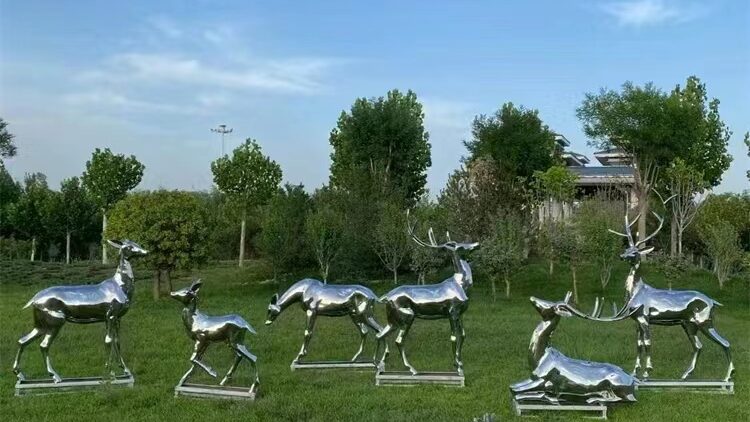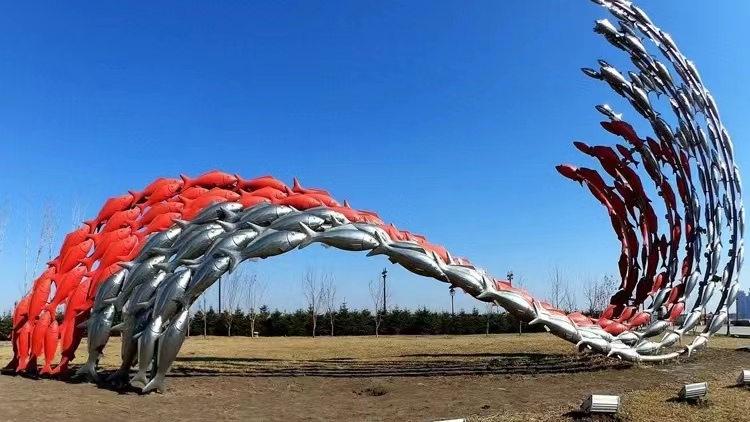Foreword:
As a form of contemporary artistic expression, stainless steel sculpture is not only a carving of cold metal, but also carries rich cultural connotations. This article will deeply explore the close relationship between stainless steel sculpture and culture, history, society, etc., as well as its symbolic significance in different cultures, and demonstrate the unique charm of this art form integrating into multiculturalism.
- Integration of stainless steel sculptures and culture
1.1 Cultural symbols of inheritance and innovation
As a representative of contemporary art, stainless steel sculptures combine traditional cultural symbols with modern innovation. Through the artist’s understanding of history and culture, the stainless steel sculptures are endowed with profound cultural connotations, allowing them to convey cultural continuation and innovation in the sculpture language.
1.2 Reflection of cultural diversity
In different countries and regions, stainless steel sculptures present diverse cultural characteristics. By incorporating local cultural elements, stainless steel sculptures have become a regionally iconic artistic expression, conveying the beautiful concept of cultural diversity.
- Dialogue between stainless steel sculptures and history
2.1 Expression of historical themes
Many stainless steel sculptures choose historical themes to reproduce and interpret historical events and figures in the form of sculptures. This method allows history to be permanently preserved in stainless steel sculptures, becoming historical witnesses in artworks.
2.2 Reflection on history and culture
Stainless steel sculptures are not only a reproduction of history, but also a reflection on history and culture. Some sculptures trigger people’s thinking about history by re-interpreting historical events, allowing viewers to have a spiritual dialogue with history.
- The significance of stainless steel sculptures in society
3.1 Concern about social issues
Some stainless steel sculptures take social issues as their themes and call attention to social issues through sculpture. This art form sublimates sculpture from a mere work of art into a social participant and an expressor of social voice.
3.2 Social and cultural exchanges
As an international artistic language, stainless steel sculpture promotes exchanges and integration between different social cultures by participating in international sculpture exhibitions and cultural exchanges. This cultural leap and collision makes stainless steel sculptures a witness to global cultural mutual learning.
- The symbolic meaning of stainless steel sculptures in different cultures
4.1 Symbols of spiritual beliefs
In some cultures, stainless steel sculptures are given symbols of spiritual beliefs. Through the carving of gods, religious symbols and other elements, stainless steel sculptures have become the spiritual sustenance that people yearn for and revere.
4.2 The blend of modernization and tradition
In some traditional cultures, stainless steel sculptures were introduced, allowing tradition and modernity to blend in art. This blend not only allows traditional culture to be passed on, but also injects new cultural vitality into modern times.
Summarize:
Stainless steel sculptures demonstrate their rich cultural significance through deep integration with culture, history, society and other aspects. It is not only an art form, but also a cultural inheritor and innovator, providing a platform for people to discuss history, reflect on culture, and pay attention to social issues. In different cultures, stainless steel sculptures, with their unique forms and symbolic meanings, have become the soul of art across time and space, enriching cultural heritage around the world.















